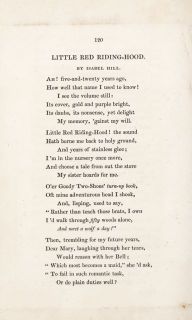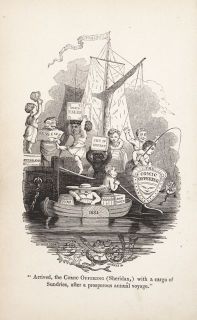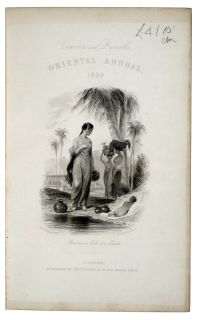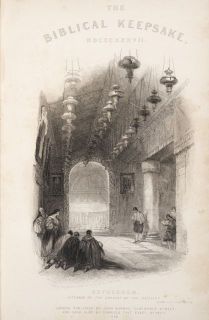Case 8: Diversification Of The GenreBy 1832, there were at least sixty-three competing annuals. Though annuals were originally seen as perfect gifts for young women, their audience soon began to expand. New subgenres emerged to appeal to a diverse and demanding market. Annuals such as The Juvenile Scrap-Book and The Juvenile Keepsake spoke to the growing market of children's books in the nineteenth century. In the 1830s travel annuals attracted adventurous or voyeuristic readers. Religious annuals sought to fulfill the desires of particularly pious purchasers, while annuals like The Humorist appealed to comically-inclined readers. Though such volumes represent a desire to diversify the genre, they all had limited success. While annuals such as The Keepsake ran for almost thirty years, the comic, juvenile, travel, and religious annuals often failed in fewer than five years. Still, these subgenres remain important, for they highlight changing tastes of those who purchased annuals.
Items No. 34a and No. 34b: Children's Annuals Beginning in 1828, publishers began to realize the potential profits of marketing annuals to children. However, the content of juvenile annuals was often much the same as the adult annuals, leading more than one reviewer to criticize them for being inappropriately advanced. Though short-lived, Marshall's Christmas Box contained literature and engravings specifically designed to delight children. Displayed here is Isabel Hill's poem, "Little Red Riding-Hood," accompanied by an engraving of the same title. |
|
 [click image to enlarge] |
 [click image to enlarge] |
|
Item No. 35: Comic Annuals Comic annuals were usually less expensive than other annuals and, apart from their frontispieces, were often embellished with woodcuts. The type of humor found in these annuals is exemplified by the commentary on the frontispiece of The Comic Offering, or the Ladies' Melange of Literary Mirth for 1834, which refers to the morocco leather binding of the volume. The note explains that "the light craft, 'The Comic Offering,' (Morocco outward bound), having made a prosperous Annual voyage under wide spreading sales is again come in with full sheets!" | |
 [click image to enlarge] |
|
Items No. 36a and No, 36b: Travel Annuals The Oriental Annual (1834-1840) is one of example of the subgenre of travel annuals. As tourism boomed throughout the early nineteenth century, so too did books marketed to those who may not have the wherewithal (or courage) to travel to distant, dangerous lands. The engraving "Boa Constrictor Seizing a Government Messenger," for example, illustrates the horrific tale of a notorious, man-eating serpent on the island of Java. As the title page engraving of "Brahminnee Girls at Ghaut" from the 1839 Oriental Annual shows, travel annuals were often testaments of the imperialist ideology of the period, pairing detailed engravings of exotic people and places with vivid prose descriptions. |
|
 [click image to enlarge] |
 [click image to enlarge] |
Item No. 37 and No. 38: Religious Annuals Though most annuals depended on their reputations as inoffensive gifts, several were marketed as particularly wholesome and religious. The most popular religious annual was The Amulet, or Christian and Literary Remembrancer (1826-1836), yet apart from its Christian-focused title, it was largely similar to annuals like The Keepsake. More conservative works, such as the short-lived Iris: A Literary and Religious Offering, pictured here, were obviously devout. Still others such as The Biblical Keepsake were religious travel guides. The 1837 edition, the title page of which is pictured here, claimed to provide "the devout student of the Holy Scriptures and to Christian travelers [sic] in Palestine" views of "the most remarkable places mentioned in the Holy Scriptures." |
|
 [click image to enlarge] |
 [click image to enlarge] |
| < Previous | Home > |
